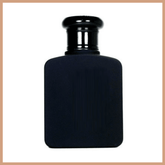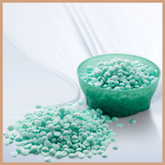What Are The Best Reeds To Use For Diffusers?
Making reed diffusers are one of the easiest and most elegant ways to dress a room, while also creating an amazing smell-scape. But if you're wondering what kind of diffuser reeds (or diffuser sticks as they are sometimes called) will perform the best in your diffuser, we'll be answering that today.

Reed diffusers are safe, flame-free, and excellent for people who have to steer clear of waxes. Reed diffusers offer colour, texture and interest, and of course, fragrance to any room, and affordably so.
You can create your own diffusers at home, with a diffuser bottle, a diffuser-friendly fragrance oil, a base and a set of reeds. But you may be asking what are the best reeds to use for diffusers?
It's a good question as your choice can truly affect the efficiency and strength of your reed diffuser and the scent it offers. First, we must discuss the most popular reeds, (pros, cons, and all), before deciding on the best choice.
How Do Reed Diffusers Work?
In order to understand which reed is best for a diffuser, we need to understand how fragrance diffusers actually work.
We know reed diffusers simply consist of a vessel containing a fragrance solution, and a set of reeds that sit in that solution. The fragrance solution (we'll discuss that next!) soaks into the reeds and is slowly drawn up through the reed until it is entirely saturated. As the solution evaporates, the fragrance is then dispersed into the air.
Depending on the fragrance solution and reeds used, diffusers can vary in terms of strength and duration. Some diffusers offer a long fragrance throw (how far into the room the fragrance is detected), while others remain close to the diffuser itself.
While it may seem intuitive that this simply depends on the strength of the fragrance solution, there’s more to it than that. The reeds are just as important.
It is, in fact, the porousness of the reed that plays an important role when it comes to fragrance strength and consistency. For example, reeds with clear channels will allow for faster, more even fragrance diffusion. Denser, more erratically-porous reeds will be slower to saturate and may create a weaker fragrance throw.
What else determines a reed diffuser's strength?
- The type of base used: Alcohol-based bases, like Perfumer's Alcohol, tend to offer a faster and stronger fragrance throw. This is because alcohol evaporates more efficiently compared to oil or water-based fragrances.
- Fragrance solutions that are thicker (i.e. less diluted with the base) will have a slower saturation and evaporation rate. Those with a higher viscosity (a thicker/heavier solution) will have a more difficult time pushing through the pores of the reed, ultimately yielding a weaker fragrance and shorter throw. Further, they may get clogged in the reed, halting the evaporation and fragrance throw.
- The location of your diffuser makes a difference, too. Busy areas can cause more dust to come into contact with the reeds. This leads to clogged reeds and a weaker scent. (The solution is to simply replace the old reeds with new ones). Warmer areas will allow for faster evaporation, thus leading to a better scent throw (but you'll go through your solution faster) and cooler rooms slow down that evaporation process, resulting in a weaker scent throw (but a longer lasting diffuser).
Types of Reeds
We'll now look at the different types of reeds available on the market and the pros and cons of each of them in order to determine which are the best reeds to use in reed diffusers.
Rattan Diffuser Reeds

Rattan is, traditionally, the umbrella term for hundreds of species of climbing plants. These bamboo-like plants are well-known for their use in furniture making.
More relevantly, rattan is one of the most popular types of reed for fragrance diffusers. This is because their key trait is that the reeds contain many small, open channels or tunnels (think of lots of tiny straws all packed together). This means that the fragrance oils can travel up the open tunnels from the bottom to the top.
However, not all rattan reeds are natural. In fact, many rattan reeds are synthetic and specially made to mimic the structure and appearance of rattan.
While rattan reeds are porous indeed, allowing the oils to travel upward, they can be prone to clogging. This is especially prevalent when using oil-based fragrances as opposed to alcohol or water-based solutions.
Pros of Rattan Reeds:
- Even and consistent channels for fast and consistent fragrance diffusion
Cons of Rattan Reeds:
- Often require regular flipping
- Thicker fragrance solutions may cause clogging
Bamboo Diffuser Reeds

Many people like the idea of using bamboo reeds, as it sounds natural and exotic. However, bamboo diffuser reads simply aren’t efficient.
This is because their interiors are filled with tiny barriers that hinder the journey of the fragrance oil through the reed. If the fragrance solution struggles to travel up the reed, the fragrance dispersion will be inconsistent and weak. Plus, bamboo can be a hard material, making it even tougher for the fragrance liquid to penetrate the wood. This also increases the risk of clogging, especially with thicker solutions and a greater presence of dust in the room.
Pros of Bamboo Reeds:
- A natural, exotic appearance
Cons of Bamboo Reeds:
- Irregular composition with “barriers” that blog fragrance saturation
- Often too hard for fragrances to efficiently penetrate the reed
- Incompatible with oil or alcohol-based fragrance solutions
- Prone to clogging with oil-based fragrance solutions
- Require regular flipping
Fibre Diffuser Reeds

Fibre reeds are man-made for the exact purpose of being used in diffusers. This means their structure and composition are optimised for fragrance diffusion. For example, the pores are consistent and perfectly-sized to allow the fragrance solution to saturate and travel up the reed at a steady rate. This means that the fragrance is evenly and consistently diffused into the room.
Plus, fibre reeds are compatible with all fragrance solutions, no matter if they are oil, water, or alcohol-based. Unlike most rattan or bamboo reeds, fibre reeds come in different thicknesses and colours (such as natural, grey, black, or white). Since diffusers are as much an aesthetic item as they are a fragrant one, this is an excellent benefit.
We think fibre reeds are the best choice for your diffuser, as they are made especially for the job at hand. What’s more, due to the even pores and consistent fragrance throw, they don’t require flipping as regularly as other reed materials. You get the most out of your fragrance solutions with minimal input.
Pros of Fibre Reeds:
- They are compatible with all kinds of fragrance oils (water, oil, and alcohol-based)
- Various colours available
- Evenly-dispersed pores for even and consistent fragrance diffusion
- Won’t clog
- Offers a stronger diffusion and further throw than other reeds
- Don’t require as much flipping
Cons of Fibre Reeds:
- Don’t have that “all-natural” appeal
- May become discoloured by certain fragrances
How To Create Your Own Diffuser

Update! Check out our full tutorial (including images and video) for How to Make a Reed Diffuser here.
Making your own fragrance diffuser is easy! Plus, it’s safer and less messy than making candles and wax melts (ideal for making with older children or simply those who prefer to avoid working with heat). All it really takes is selecting your materials and compiling them:
- Pick a bottle that will hold your fragrance oil and be the aesthetic base of your diffuser. A narrow opening at the top will allow the reeds to sit upright and will minimise evaporation of your solution. Whether you choose a clear glass or coloured glass is up to you. Why not try a classic matte black bottle as an elegant contemporary addition to your space?
- Choose a cap to up-the-ante on the aesthetic, such as a high-shine silver cap or a warm natural wood cap for a bit of texture.
- Now choose your fragrance and preferred base. This is entirely up to you and your nose. Make sure your fragrance is compatible with diffusers - we have a full range of diffuser-friendly fragrance oils here. (Note: don’t simply throw essential oils and water in your bottle as they will struggle to penetrate and travel through the reed effectively. Diffusers require a binding agent such as Augeo Diffuser Base to help with evaporation and fragrance diffusion).
- Now pick your reeds. As we’ve concluded here, fibre reeds are the best choice. They’re custom-made for the purpose of welcoming fragrance oils and diffusing even and consistent scent.
- Pour your fragrance into your bottle along with the base (at a ratio of 25:75), place the cap and stopper into your bottle and shake well for around 90 seconds. Remove the stopper and replace the cap, add your reeds, and wait for the fragrance to saturate.
- If you notice that the fragrance has stopped diffusing, flip the reeds over.
Ready To Buy Your Diffuser Reeds? We Have Everything You Need To Make Your Own Reed Diffuser








10 Comments
Should I replace the reeds each time I refill or use the same saturated reeds.
What are the chunky sticks for. What is the difference.
Hi Jemma, When using the thin fibre reeds, normally 8-10 should suffice. If you want a slightly stronger scent, you can use all 10 but if that’s too strong, you can take a few out to make it more subtle :) So, really, it’s up to you depending on how strong you like your fragrances! Hope that helps! Kimberly – Craftovator
Hi there,
How many reeds should you use per diffuser?
Thanks.
Hi Anne, Glad you enjoyed the post! For essential oils, you’d use the same ratios as you would for fragrance oils – so somewhere between 15% – 25% depending on the strength of your oil but you’ll need to check the IFRA category (10.A) to ensure it can be used in a diffuser (download the documentation that’s linked on each of the products – it’ll say either ‘Download all information’ or ‘Download IFRA 49th Amendment’ and scroll to where it shows all the categories & max percentages). Our lavender essential oil can only be used up to 10%, unfortunately, so it wouldn’t be appropriate for use in a diffuser. However, you are able to use our Lavender fragrance oil up to 20%. The tutorial post How to Make a Reed Diffuser explains this in more detail: https://craftovator.co.uk/blogs/academy/how-to-make-reed-diffusers-using-augeo-base Our reeds are sold in packs of ten :)
Hope that helps, Craftovator – Kimberly
Leave a comment
All blog comments are checked prior to publishing